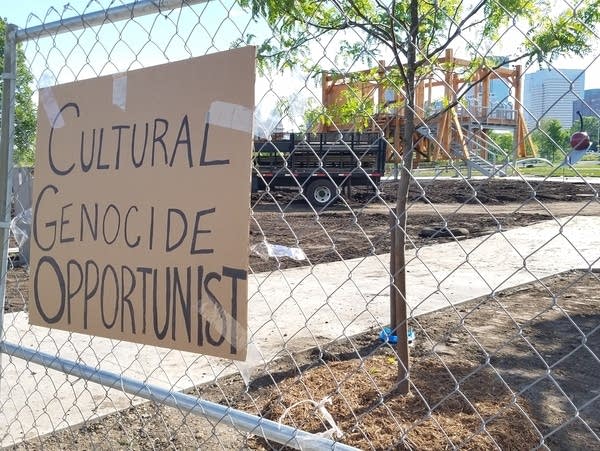Walker director says 'Scaffold' should be dismantled

On a construction fence surrounding the Walker Art Center Sculpture Garden, hangs a sign of protest against the work "Scaffold" by artist Sam Durant on May 27, 2017.
Tim Nelson | MPR News
Go Deeper.
Create an account or log in to save stories.
Like this?
Thanks for liking this story! We have added it to a list of your favorite stories.


